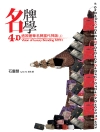Italian graphic design offers a new perspective on the subject by exploring the emergence and articulation of graphic design practice, from the interwar period through to the appearance of an international graphic design discourse in the 1960s.
The book asks how graphic designers learned their trade and investigates the ways in which they organised and made their practice visible while negotiating their collective identity with neighbouring practices such as typography, advertising and industrial design. Attention is drawn to everyday design practice, educational issues, mediating channels, networks, design exchange, organisational strategies and discourses on modernism.
Drawing on a wide range of primary sources and placing an emphasis on visual analysis, this book provides a model for a contextualised graphic design history as an integral part of the history of design and visual culture.
Содержание
Introduction: drafting Italian graphic design
1 Vocational education and the typographic roots of graphic design
2 Open Studio (Boggeri)
3 Graphic design and good taste at the Milan Triennale
4 Education and practice, working hand in hand
5 The multiple identities of graphic design
Conclusion: redrafting Italian graphic design
Bibliography
Index
Об авторе
Chiara Barbieri is a Researcher in Design History at University of Art and Design Lausanne (HES–SO) and University of Applied Sciences and Arts of Southern Switzerland












